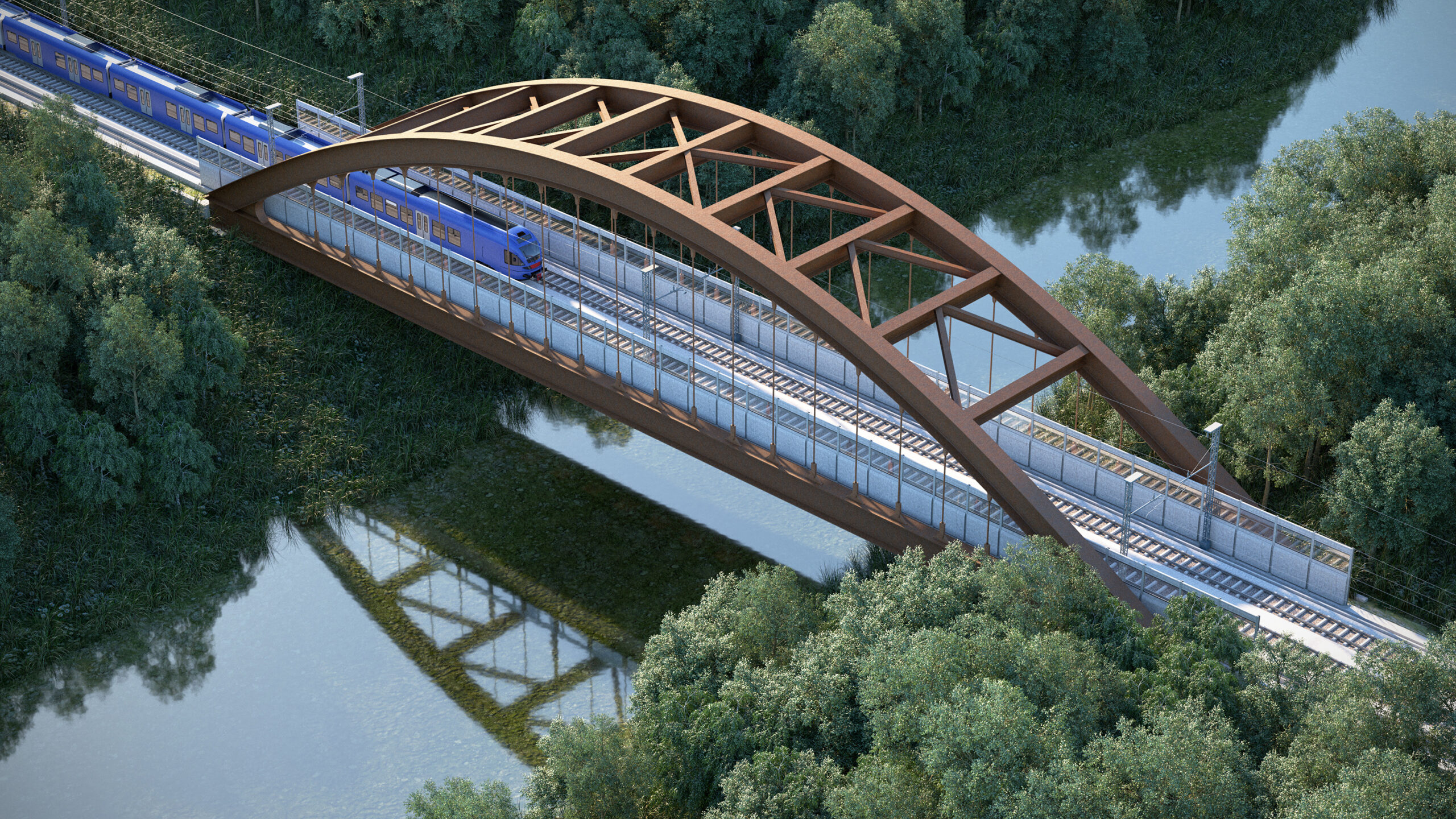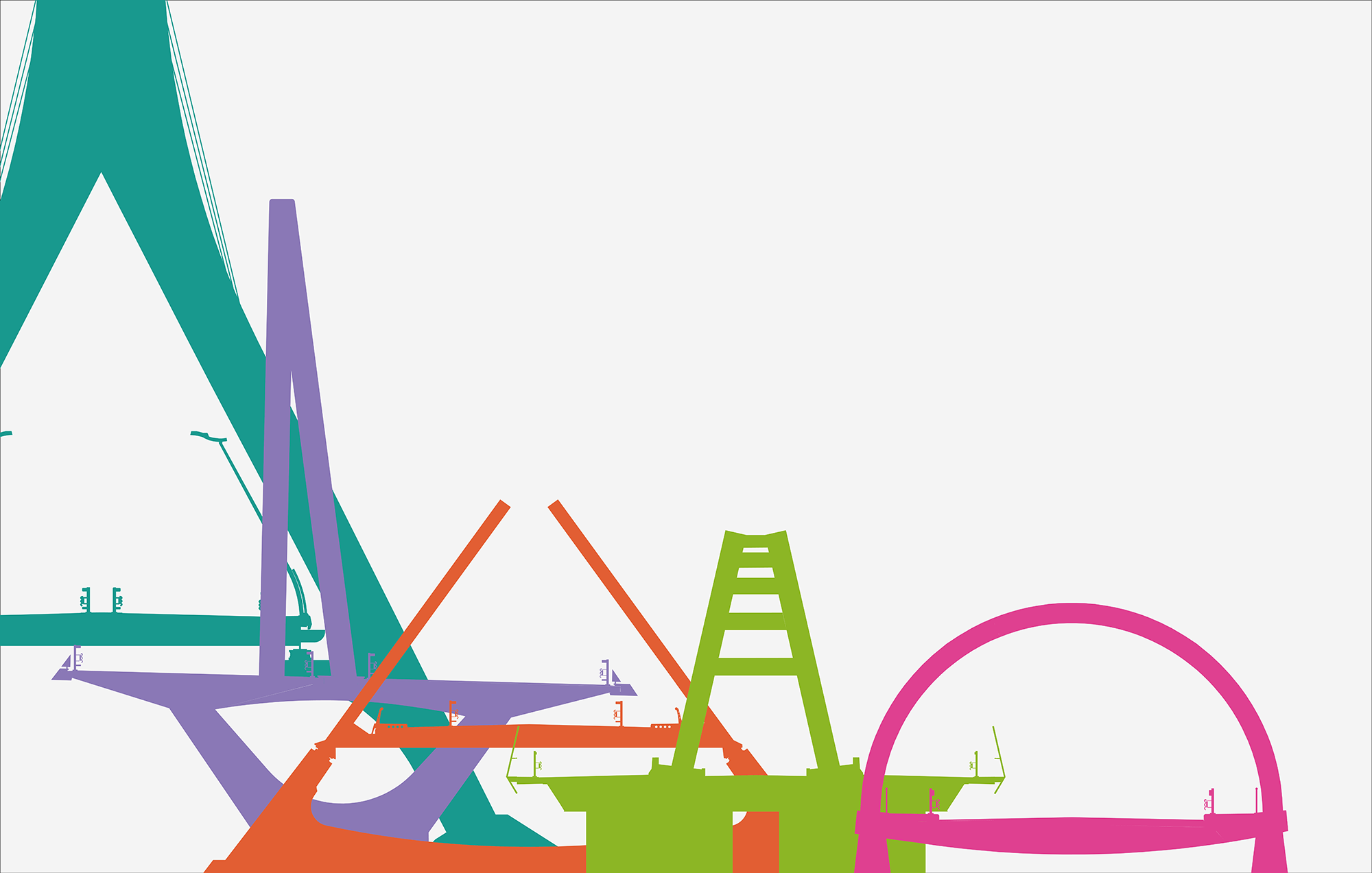Bridges – more than just a physical connection
A journey through history, technology and the future.
The construction of a bridge isn’t just the project for the deck but all the different works that are part of it – supports, foundations, the mass of soil involved and, last but not least, the surrounding environmental context of where the bridge is or will be. The bridge itself is an architectural and engineering product that responds to precise technical, infrastructural and aesthetic requirements. Building a bridge is a creative act similar to the conception of a work of art, where scientific and artistic skills contribute with capacity, foresight, perspective and ability in the management of the available resources.
Currently, the need to put the specific capabilities of stakeholders, regional managers, architects and designers in the different stages of design, particularly the infrastructure work, into an integrated whole is becoming more and more obvious. On this, the ‘best practice’ pursued in NET Engineering for many years, independent of the specific place and client with whom we work, has led to the consolidation of the system engineering method and a cultural and professional growth that has changed the shared view of the world at Group level, multiplying the number of possible points of view.
This approach, consolidated over time and able to orient the project to operations that redefine the relation between nature and man’s intervention, has also been applied in the most recent constructions of bridges, the key players in this section.
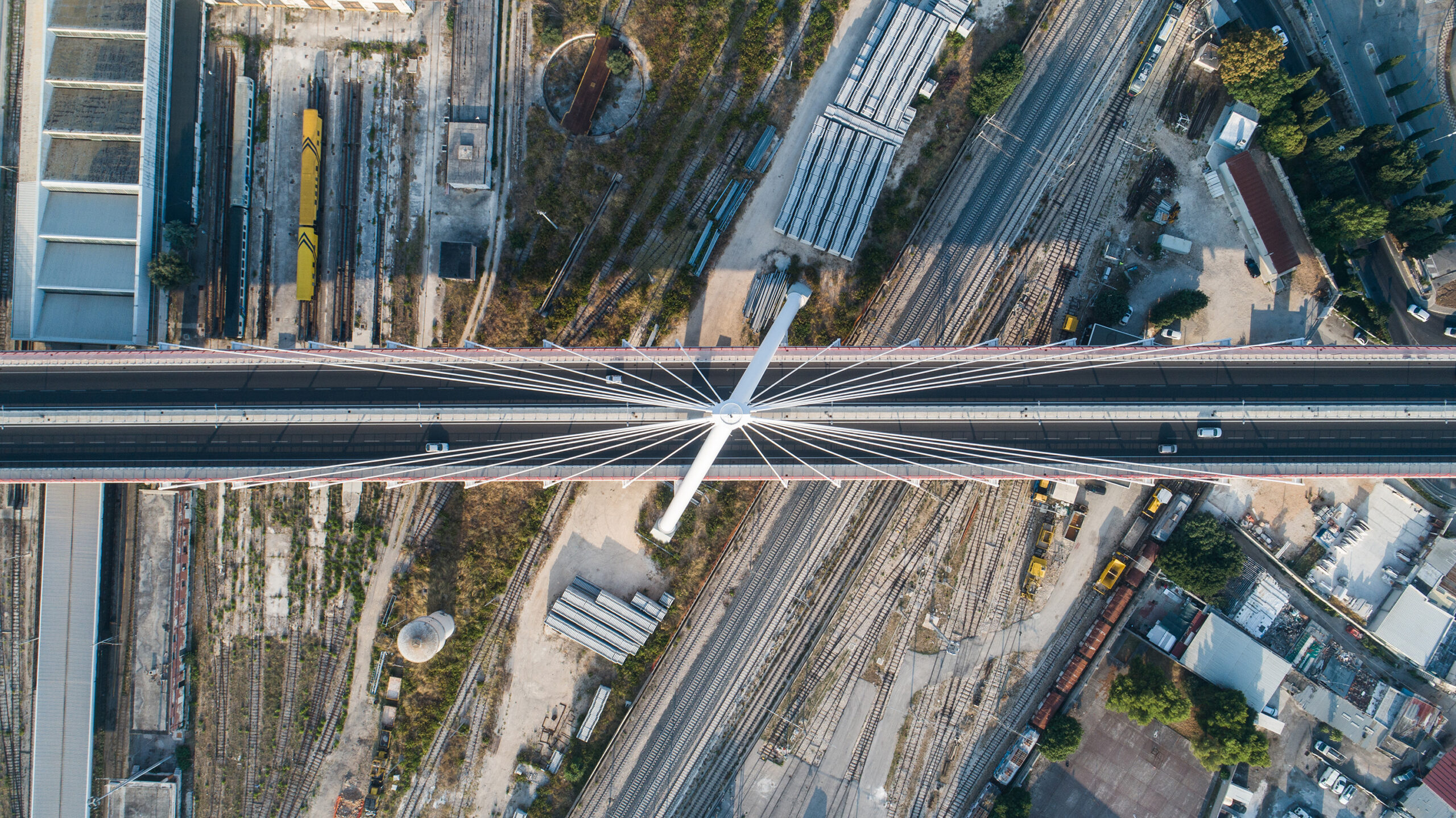
The Darwin Viaduct
East Padua road junction, Padua (Italy) – 2006
The Darwin Viaduct marks the road junction at the East Padua motorway exit and the connecting infrastructure between Corso Argentina and S.S. (Strada Statale – Trunk Road) 307 which is a very important crossroads in the urban and regional road network. The bridge is all steel and has an overall span of 550 m with 11 bays, and consists of three steel arches (150 m wide and 25 m high at the road level), above the deck.
This bridge encapsulates many concepts, some innovative, which were brought together in an iconic work characterising the eastern access to Padua at the beginning of the millennium. The ‘urban bridge’, whose distinguishing feature is that it can be observed not only in perspective and by those crossing it but also by those who pass under it.
From the composition point of view, a shell section was adopted, which goes beyond the normal criteria of the sections of girder bridges (which traditionally indicate central layers and flat arches), and is more similar in conception to that with a ‘wing’ profile adopted in aeronautical constructions.
It was decided to adopt complete structural continuity between the deck and the metal piles – the concept of structural ‘continuity’ became the guiding element for the whole work, which was only disconnected at the ends (on the transition abutments to the approach embankments) while the deck, piles and foundations, including the lateral access ramps, were totally connected, i.e. without links, supports or joints of any kind.
The result gives the effect of seeing the structure as a unit, a co-ordinated whole. It should also be remembered that the bridge serves a very important road junction on the city ring road.
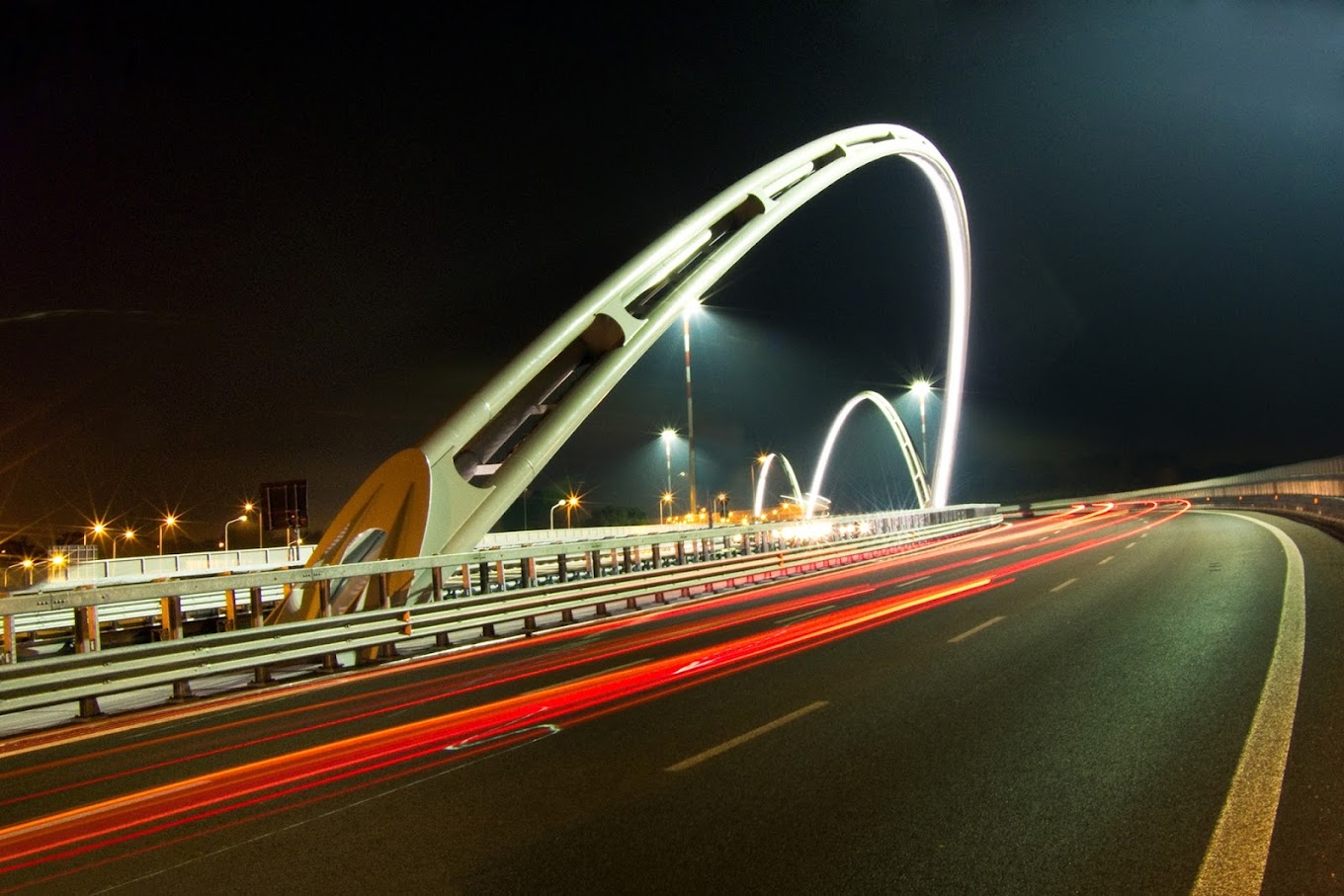
Although formally important, the viaduct initially appeared as a ‘low’ work in a plain area. To remedy this, large, high illuminated arches were planned to make the work visible from a distance and make it a symbolic ‘gate’. The arches themselves have no static function and are only marginal for illumination but, however, they are notable structurally for their size and interaction with the wind. The arches take up a characteristic shape of Paduan architecture, where the arch is one of the most recurring elements in a typical porticoed city.
The Darwin Viaduct is the archetype of the formal concept of ‘monumental bridge’, i.e. a work that introduces important elements not directly connected to the function to carry out but to a more representative one – access to a certain place.
The innovative elements introduced in the work at the time of its conception were the concept of ‘end-to-end bridge’, i.e. having continuity between the deck and supports on large bridges – and the shell section.
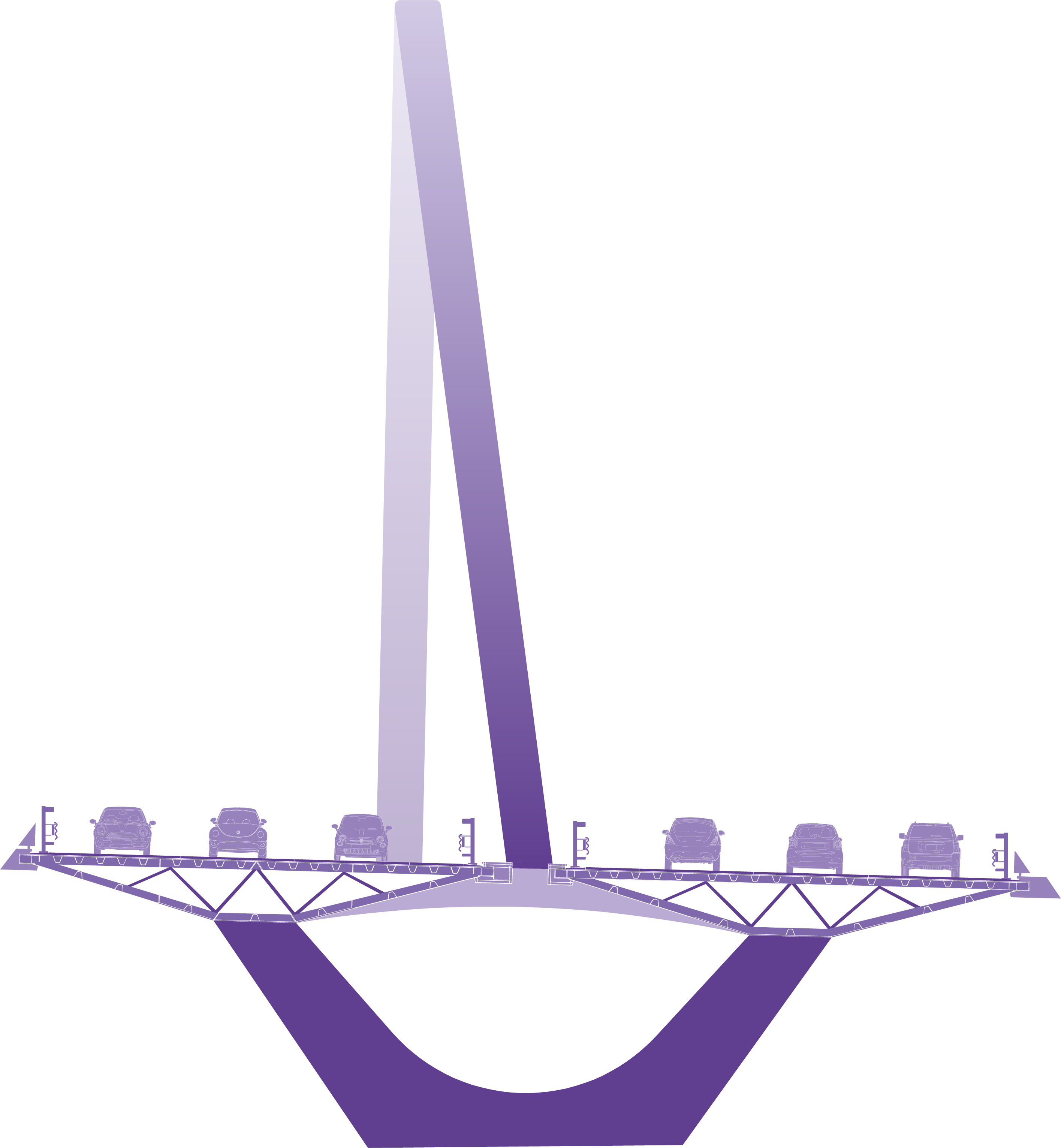
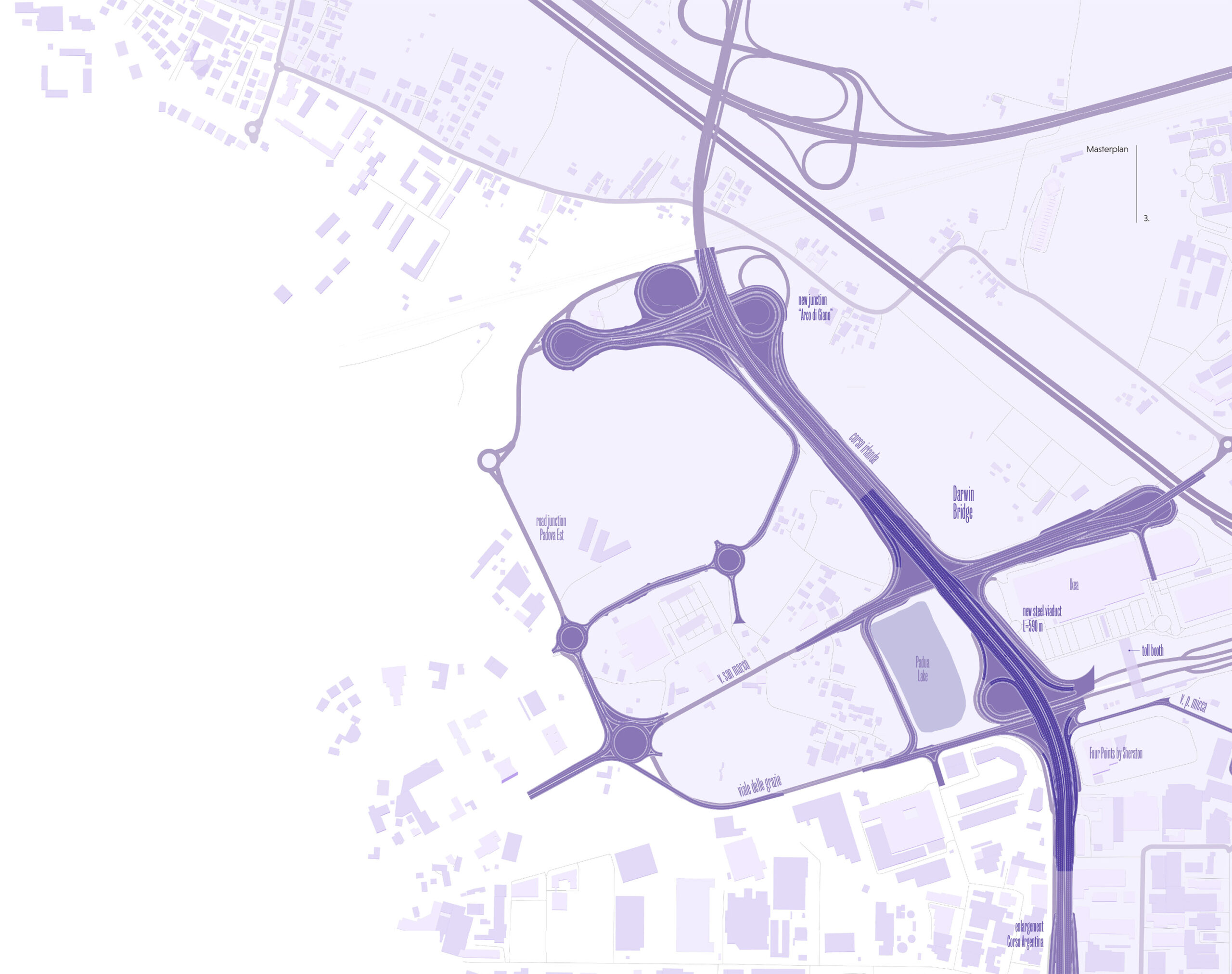
The Adriatic Bridge
Cable-stayed bridge on the north-south route in Bari (Italy) – 2016
The shapes of the structure, intended to close a large gap in the continuity of the road and urban plan in Bari, were conceived by Carlos Fernandez Casado, with design by NET Engineering. An area of potential urban expansion, but critically intersected by railway infrastructure, had been waiting for the gap to be filled for more than 30 years.
Therefore, the route was to be one of the functional connections in passing over the railway junction, currently the subject of a very wide-reaching urban planning and social involvement tender. As the route lies in a somewhat degraded area, just before some railway lines, the aim was twofold – to solve the infrastructure and road problem and also regenerate the environmental context in terms of furnishing and organisation.
This was the origin of an iconic work whose important engineering contents were set out through regional recovery combined with the essential function of connection – a cable-stayed bridge with a single upside-down Y central pylon, meeting on a double span of 112 metres over the railway tracks and structurally continuous with the access viaducts, with an overall structural length of 626 metres.
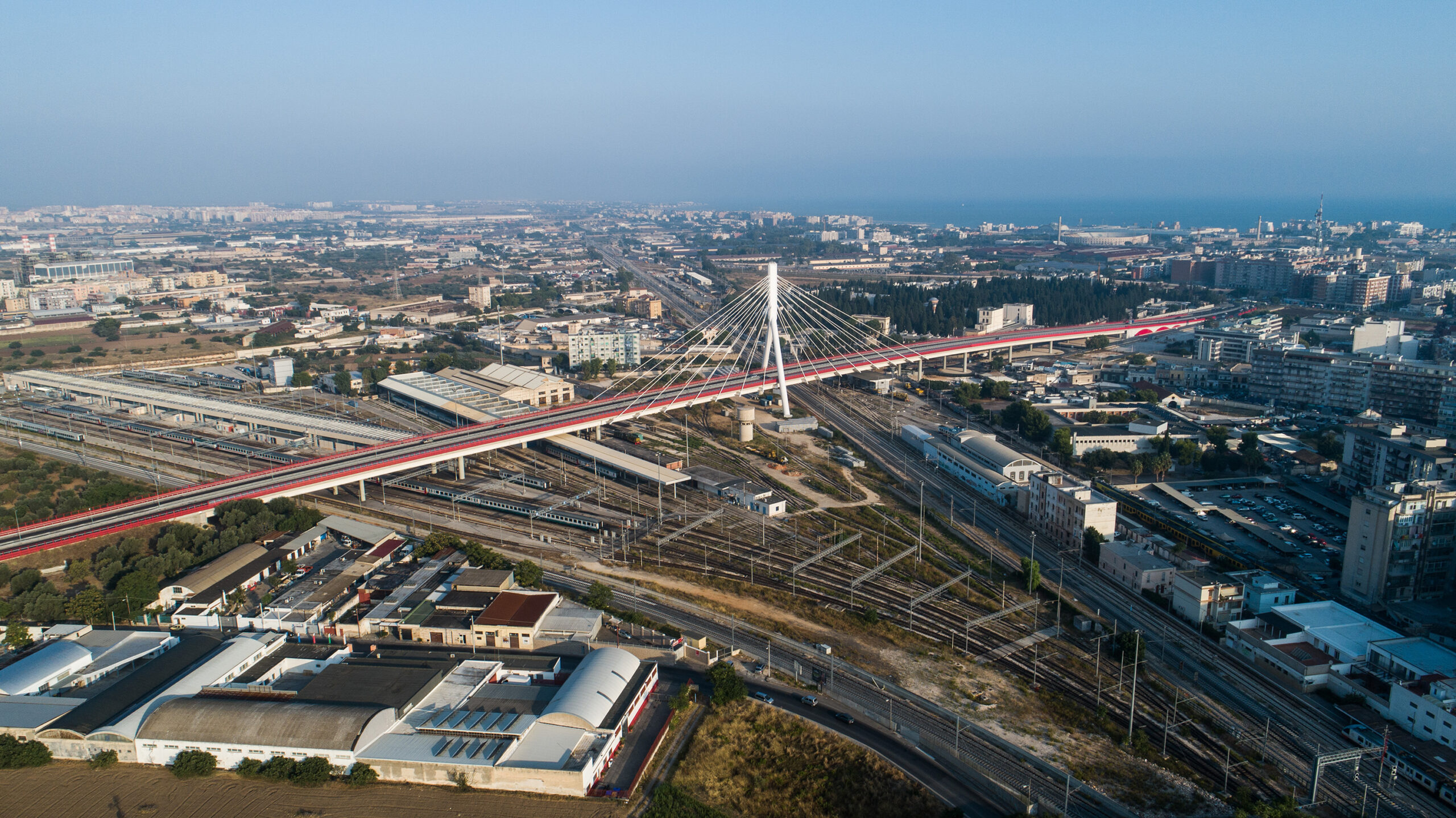
The position of the bridge in the town and its size required a design that was very aware of the aesthetics and with which the administration wanted to distinguish and mark out the area positively. The need to overcome a large number of tracks with lightness and minimum impact pushed towards the choice of an unconventional structure just like the stages of construction, which set out the start of the cantilever deck, from the abutments to the centre, without involving the underlying railway circulation. As it is an urban bridge, care was taken with the appearance and formal order, including the lower part of the viaduct, e.g. choosing supports with a rounded section, linear elements for the deck and the choice of particular ‘patterns’ for the visible surfaces of the containing walls of the access embankments.
The main challenge in drawing up the project concerned the time available to pass from the concept of the work to the executive project. The result was attained by thinking of an extremely detailed ad hoc process – a real ‘project of the project’. From the technical organisational point of view, the design service given led to the definition of the work through all stages enabling the client to start the tender in the limited times dictated by the expiry of the Community financing.

The Leonardo Bridge
Variant to the SR69 with the new bridge over the River Arno, Arezzo (Italy) – 2014
Working in Tuscany almost systematically poses significant environmental and, in particular, landscape, problems even if, as in this case, the work involved a more efficient connection in the road network of the Montevarchi-Terranuova Bracciolini-San Giovanni Valdarno industrial area in the province of Arezzo, known for the Prada offices and factory.
The redevelopment in a new site of the existing SR (Strada Regionale – Regional Road) 69, for an overall distance of about 11 km, was a strategic operation in enhancing the Valdarno area as it enabled relief of the traffic congestion in and out of the relevant A1 motorway toll booth, improving access to the industrial areas of the tanning district.
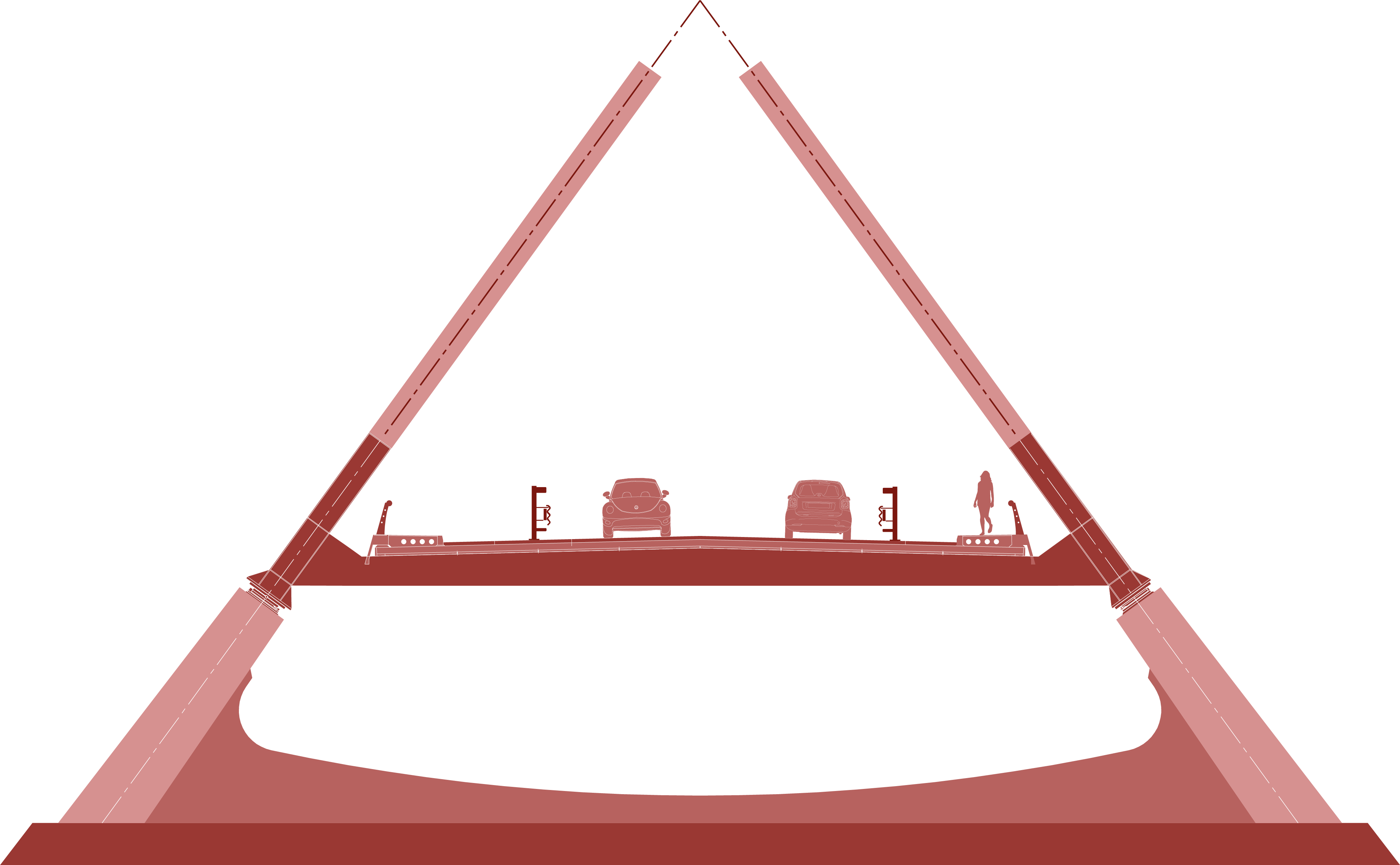
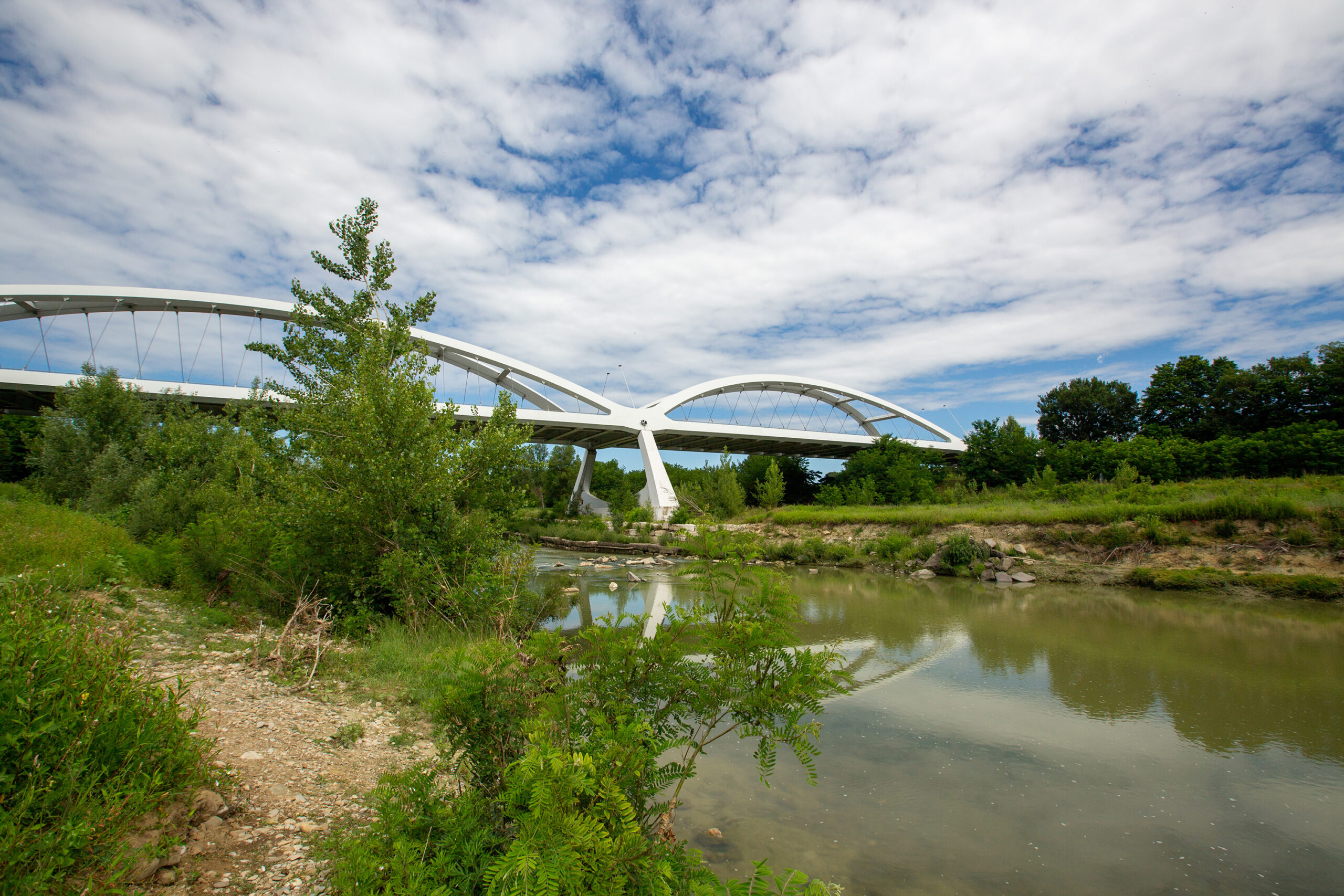
The New Bridge, which crosses the River Arno Nature Reserve, has special symbolic value and was designed in co-operation with the Oficina de Proyectos Carlos Fernandez Casado, one of the most prestigious international names in the sector.
The New Bridge is 495 metres long and crosses the Arno and A1 motorway with two main spans over the river sustained by two steel inclined arches and three smaller side spans, one of which was constructed by cantilever above the motorway. The metal arches were steeply inclined to enhance the idea of junction at the top and thus reinforce the ‘access gateway’ effect to the industrial area. A construction work is the union of the nature of the places hosting it and the function attributed to it.
The originality was preserved by giving the columns in the Arno a sculptural form, shaped by the need to house the lower inclined surface of the main arch-beam (following the criterion that the function inspires the form).
The inclusion of the bridge also considered the problem of a landslide of the overlooking Poggilupi hill which menaced the existing road and would have conditioned the new one. Carefully designed, almost invisible work, of containment and stabilisation gave the technical solution to the hydrogeological instability and allowed the landscape recovery of the whole hillside, now lined by the new road.

The Bridge Unità d'Italia
Trade Fair Overpass, Padua (Italy) – 2012
The bridge originated as a way of ‘re-stitching’ the urban fabric by overcoming the interruption caused by the railway tracks near to Padua station, creating a road, pedestrian and cycle connection between the Arcella residential area (north of the railway) and the Padua Fair area (to the south), near to the historic centre, the university area and office district.
The operation is the most important element of the east/west urban route, named ‘Arco di Giano’, created through a PRUSST – Urban Regeneration and Sustainable Development Programme.
An aim of the project was to respect the houses near to the railway and the Milcovich Park, which defines where the new infrastructure reaches to the north. The bridge gives the priority to bike and pedestrian use, placing it directly under the tied arches used to cross both the railway and road with a single span. The cycle-pedestrian part is separated from the vehicle part by planted troughs which increase the urban appearance of the bridge, almost turning it into a meeting place, i.e. a small suspended square.
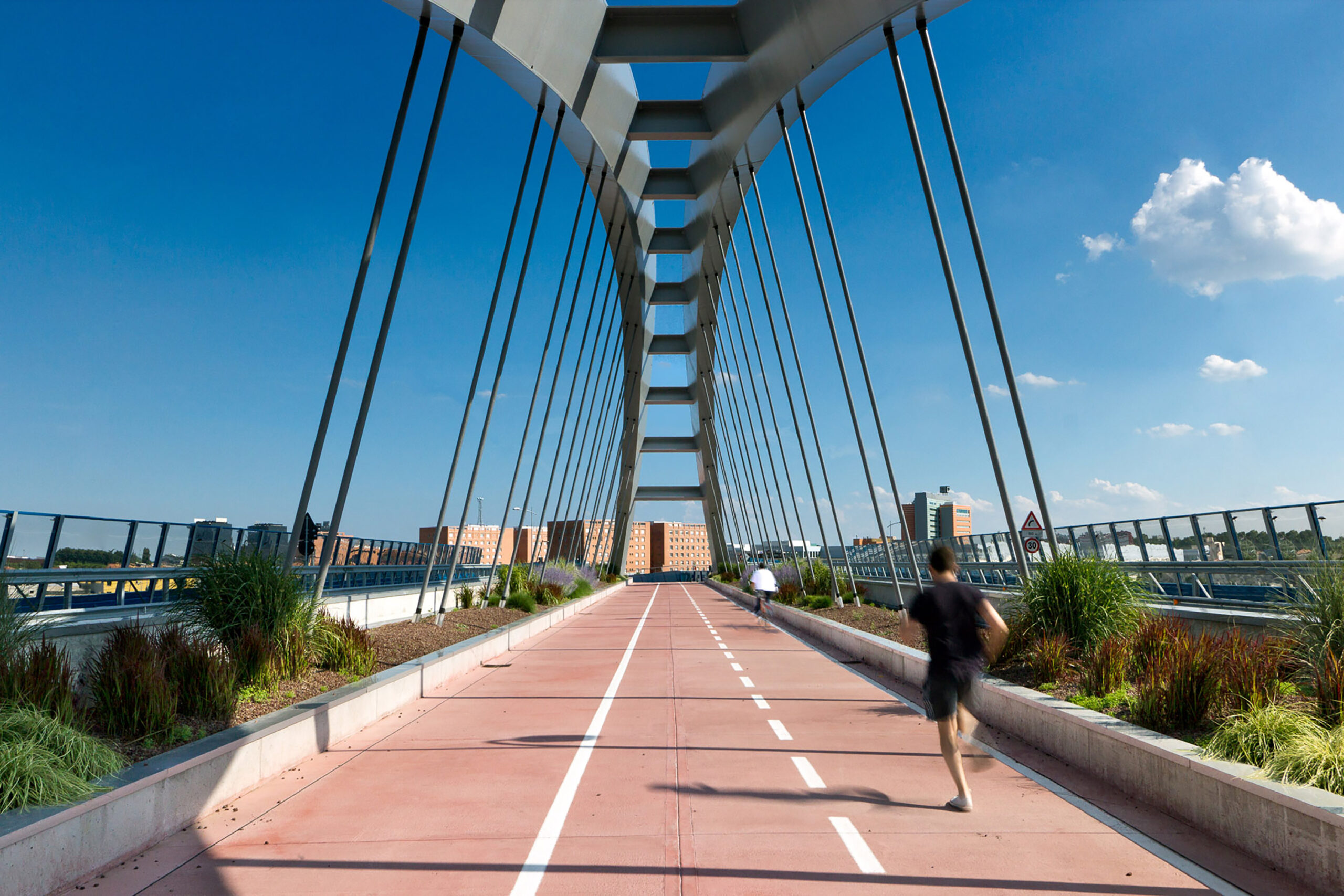
The road parallel to the railway is part of an important urban connection called ‘Arco di Giano’. The road has two arms going up to and down from the bridge which are on the external sides of the main arch-beam. In this way, the function required suggested an ‘unconventional’ composition of the section with inversion of the more usually found one where the road part is between the arches and the pedestrian paths are on the outside. The connected pedestrian bridge is also interesting and is a continuation of the main one over the railway for pedestrian access on the south side. On the north side, access is via a path created on an artificial hill limited by the shoulder of the bridge on the same side. The work thus became part of the green context of the neighbouring park with an element which, overall, is neither threatening nor looms over the houses close by.
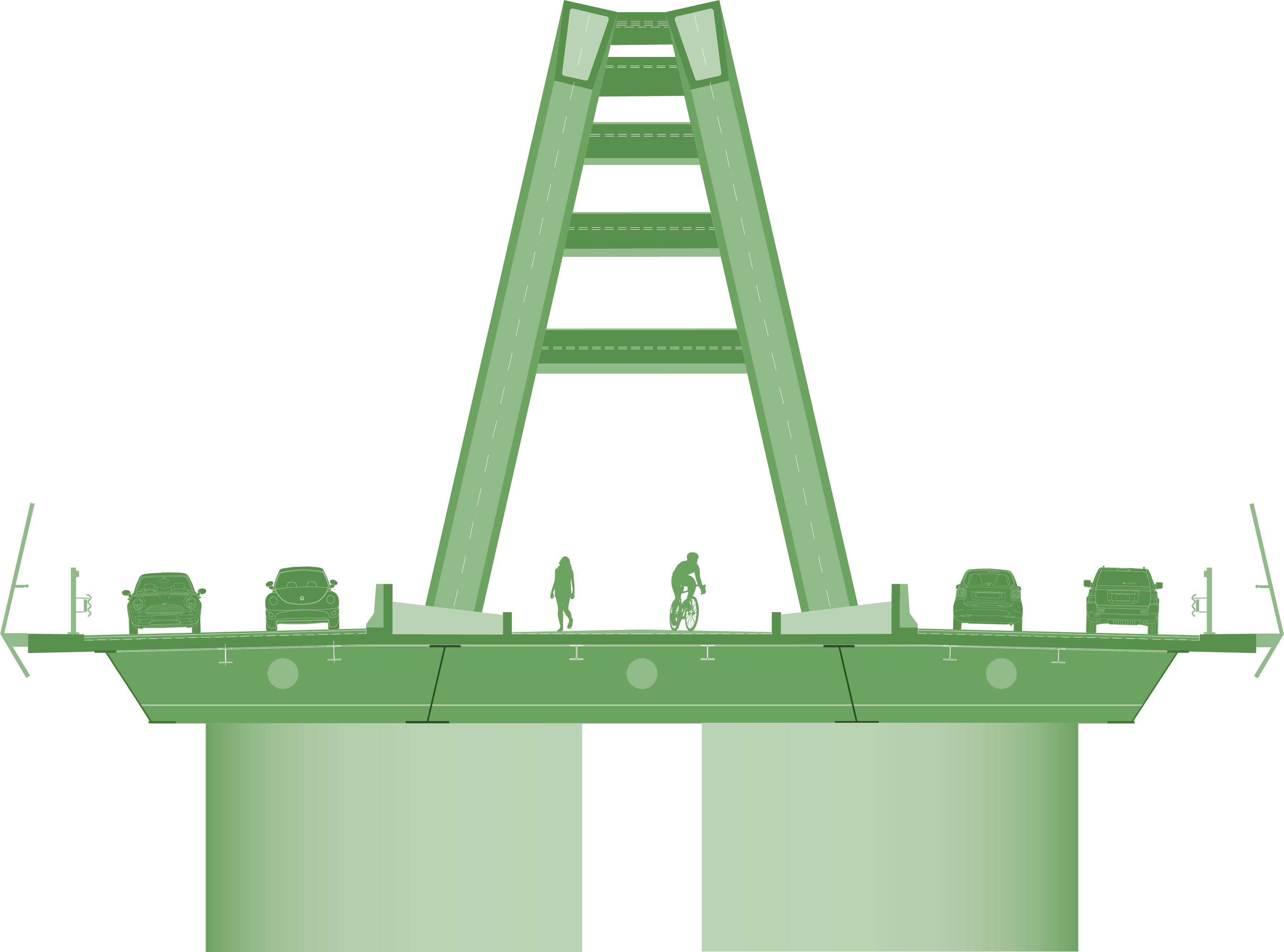
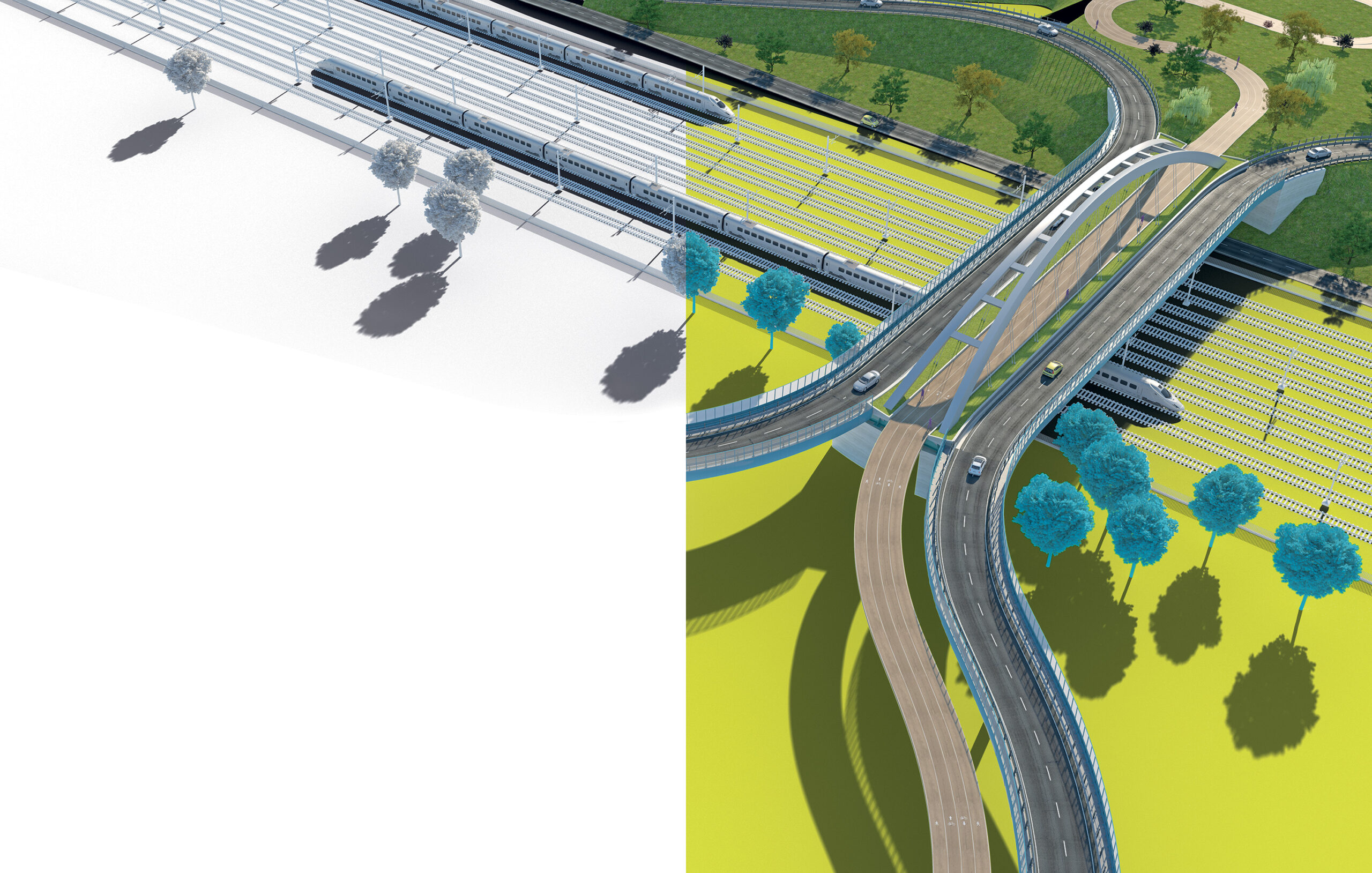
The Bridge over the Ticino
Project for the new bridge at Oleggio, Novara (Italy) – 2016
This bridge hasn’t yet been constructed and, more than others, tries to blend the work with the natural environment. It originated with the need for a better road connection for people wanting to reach Malpensa airport from Piedmont using the old inter-regional road.
The existing bridge, a physical element forming the border between Piedmont and Lombardy regions, was built in 1889. It is an iron truss structure with a single lane used alternatively and so completely inadequate for the changed transport requirements. Nevertheless, the structure is fine evidence of industrial archaeology and is an example of the radical technical innovation made possible by the use of iron from the second half of the 19th century.
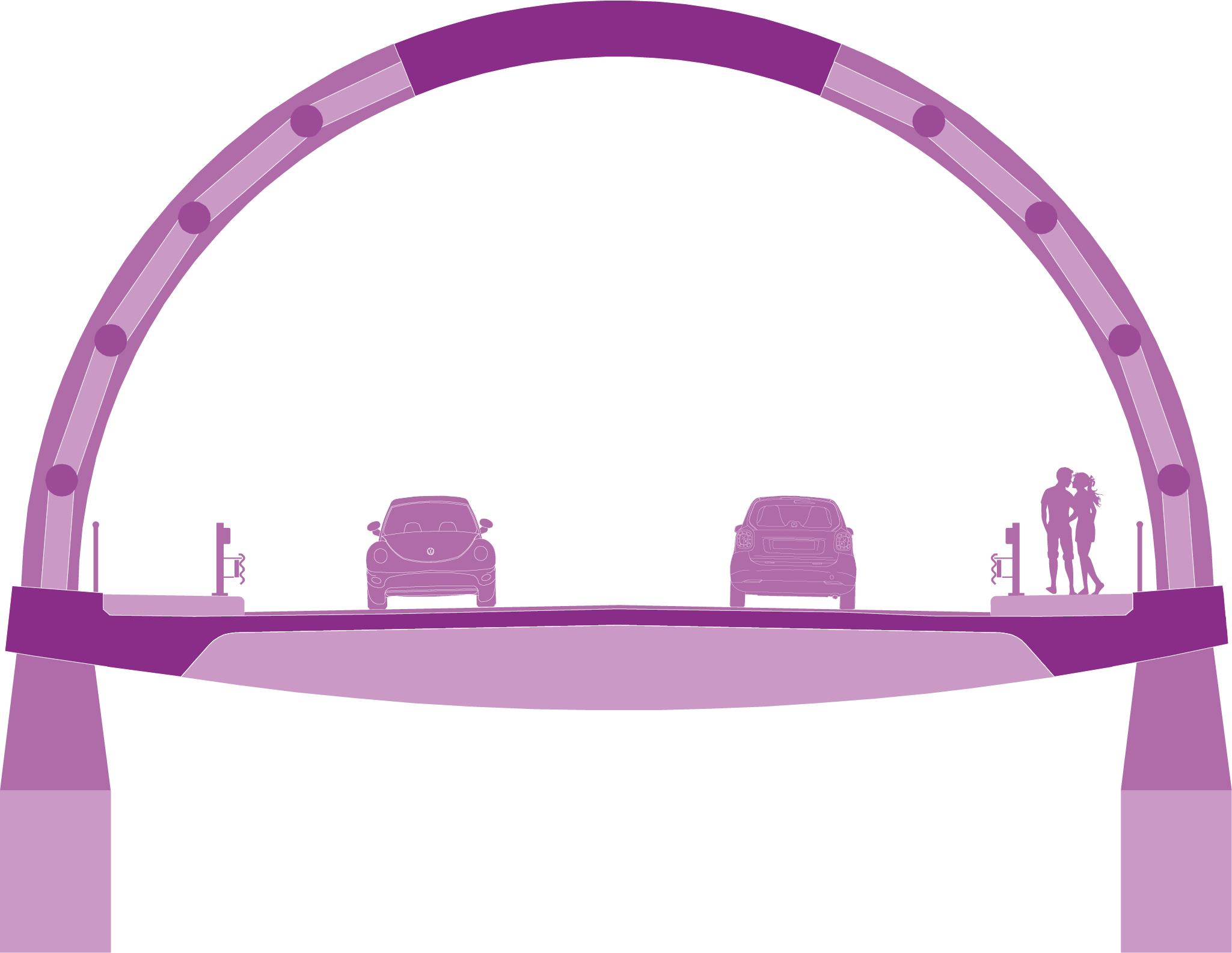

The area involved in the works is subject to extensive environmental restrictions as it lies within the Parco fluviale del Ticino (the River Ticino Park) which extends on both banks in Piedmont and Lombardy regions. The restriction of the natural river environment led to the choice of working, e.g. for the foundations, with the least possible impact at the construction stage.
However, the presence of the historic ‘lattice bridge’ couldn’t be ignored, as it is a consolidated element in the environmental context. Its downgrading to a bridge for cycle paths in the area, after adequate preservation and restoration, has been theorised. Therefore, a form has been adopted which, in modern terms, recalls that of the ‘screen’ (i.e. the lattice which was a feature of the elevation of the historic bridge) – a framework of a lattice bridge with a mixed system of prestressed concrete for the deck, an upper closing ‘cord’ and walls of linear metal elements forming the lattice.
Obviously, it’s an unusual shape that has led to the use of specific models and the conception of singular construction methods.
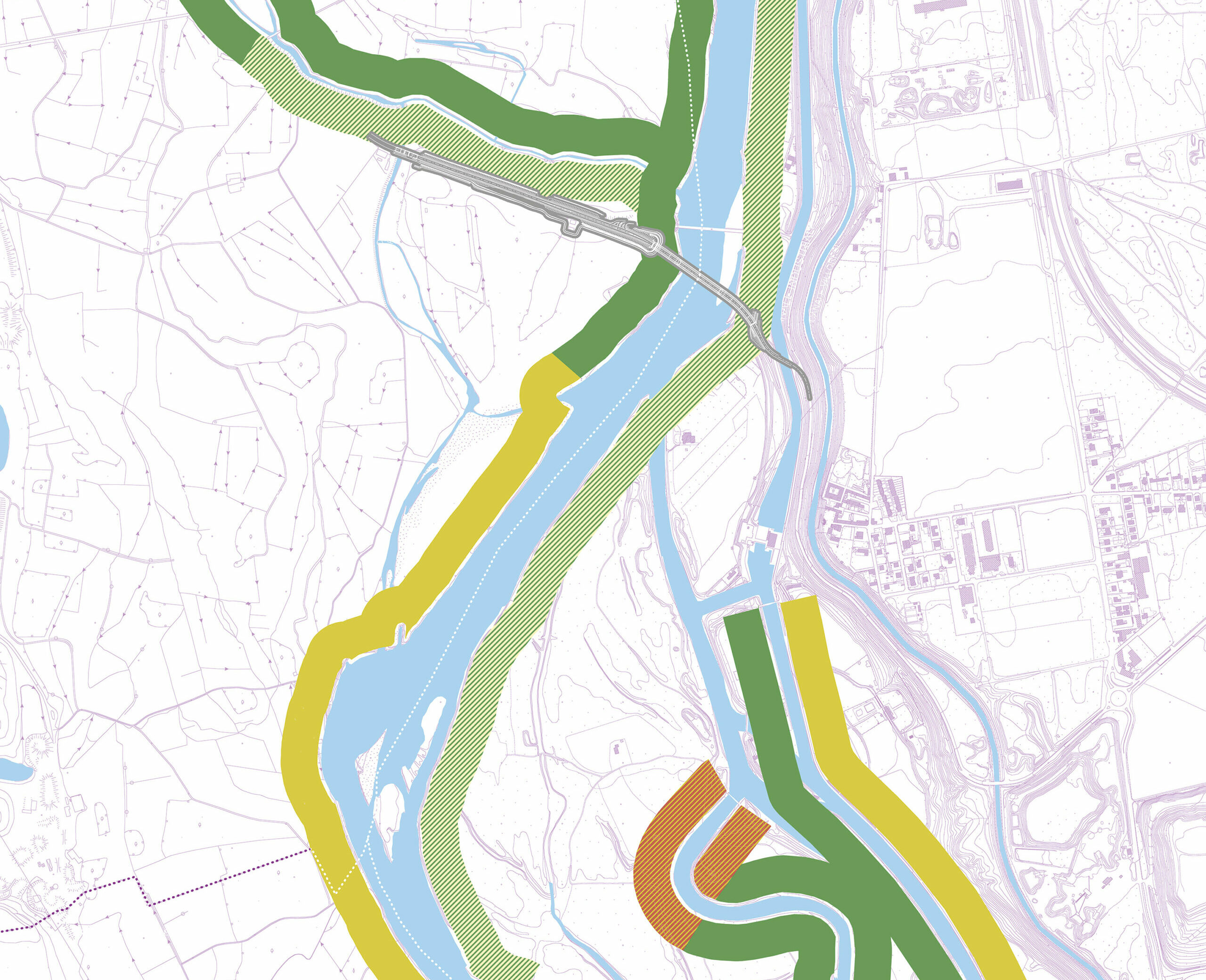
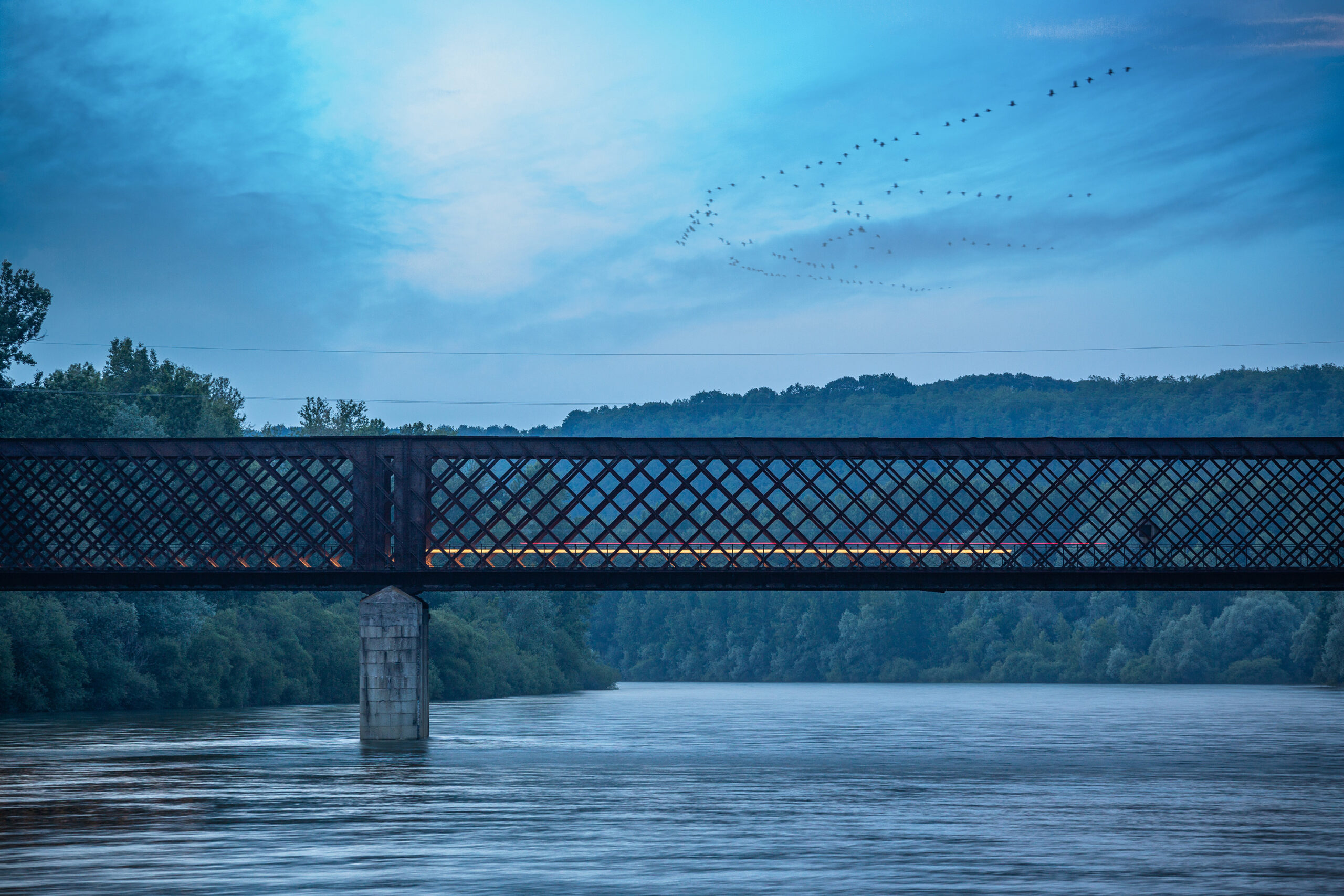
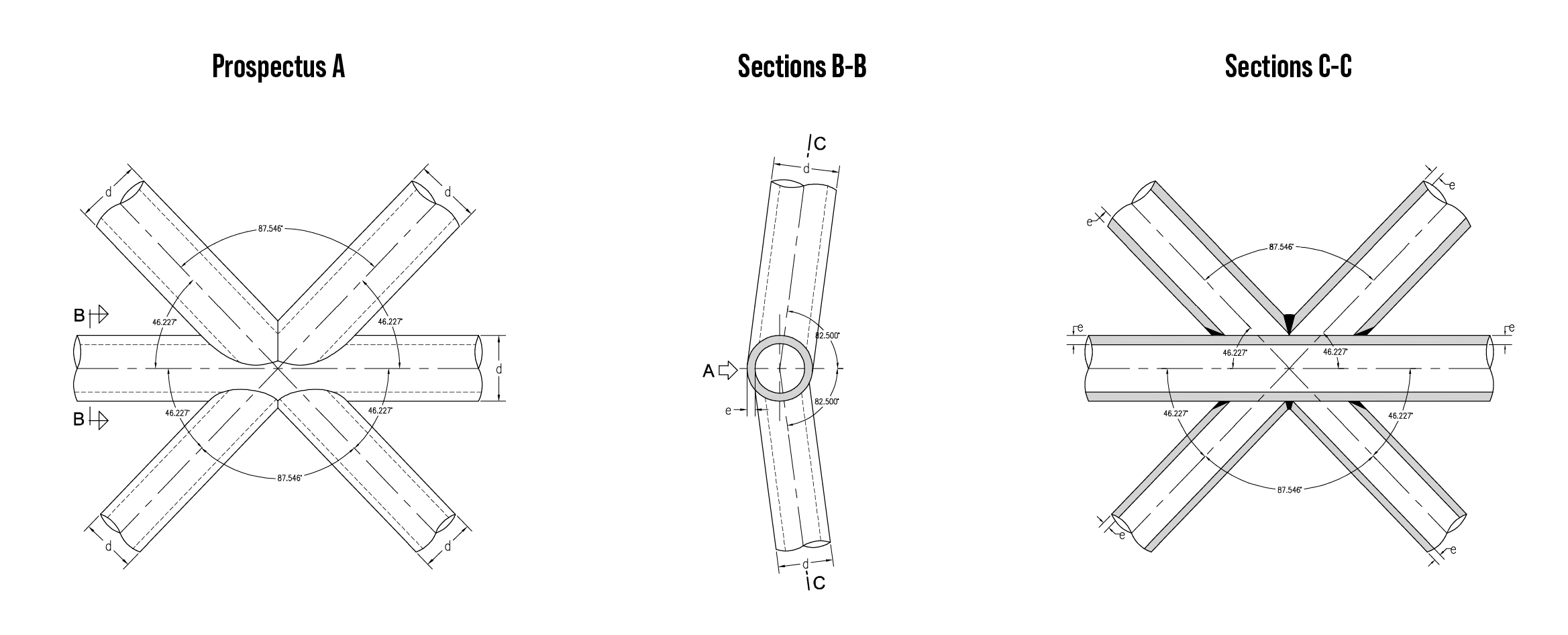
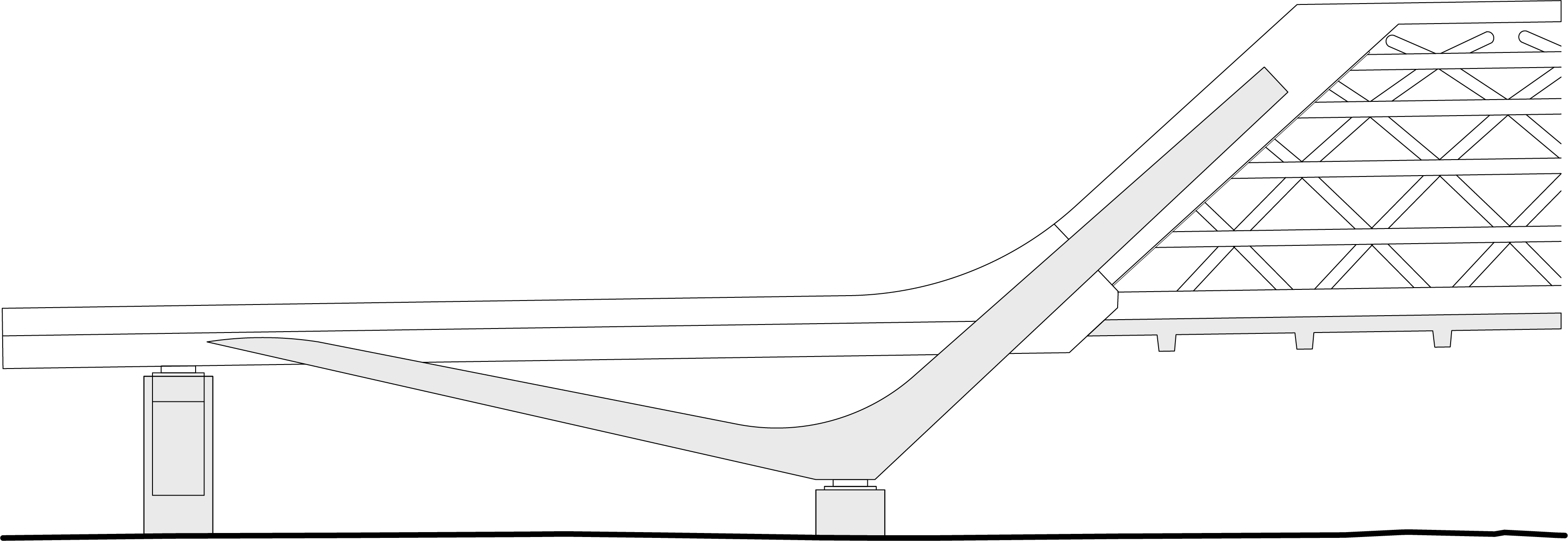
The Becca Bridge
Becca Bridge was built in 1912 where the Rivers Po and Ticino join in the province of Pavia – 2021
The aim was to stabilise the connection between the Oltrepò area and the rest of Lombardy and, therefore, no longer subject to the conditions of the rivers. Today, Becca Bridge is an essential element in the landscape, of the local identity and collective memory. However, more than a century after its construction, the existing bridge is no longer able to fulfil its function. It was designed for traffic very different from today’s, both for the volume and features of the vehicles; currently, there are significant limitations on transit – a ban on heavy vehicles excluding public transport and emergency vehicles, and speed limits of 50 kph with access for light vehicles. The decision of Lombardy Region to start the process for the construction of a new bridge arises from this. The Region opened a tender for drafting the Feasibility Document divided into two steps – the indication and comparison of the alternatives, and the design analysis of the preferable solution.
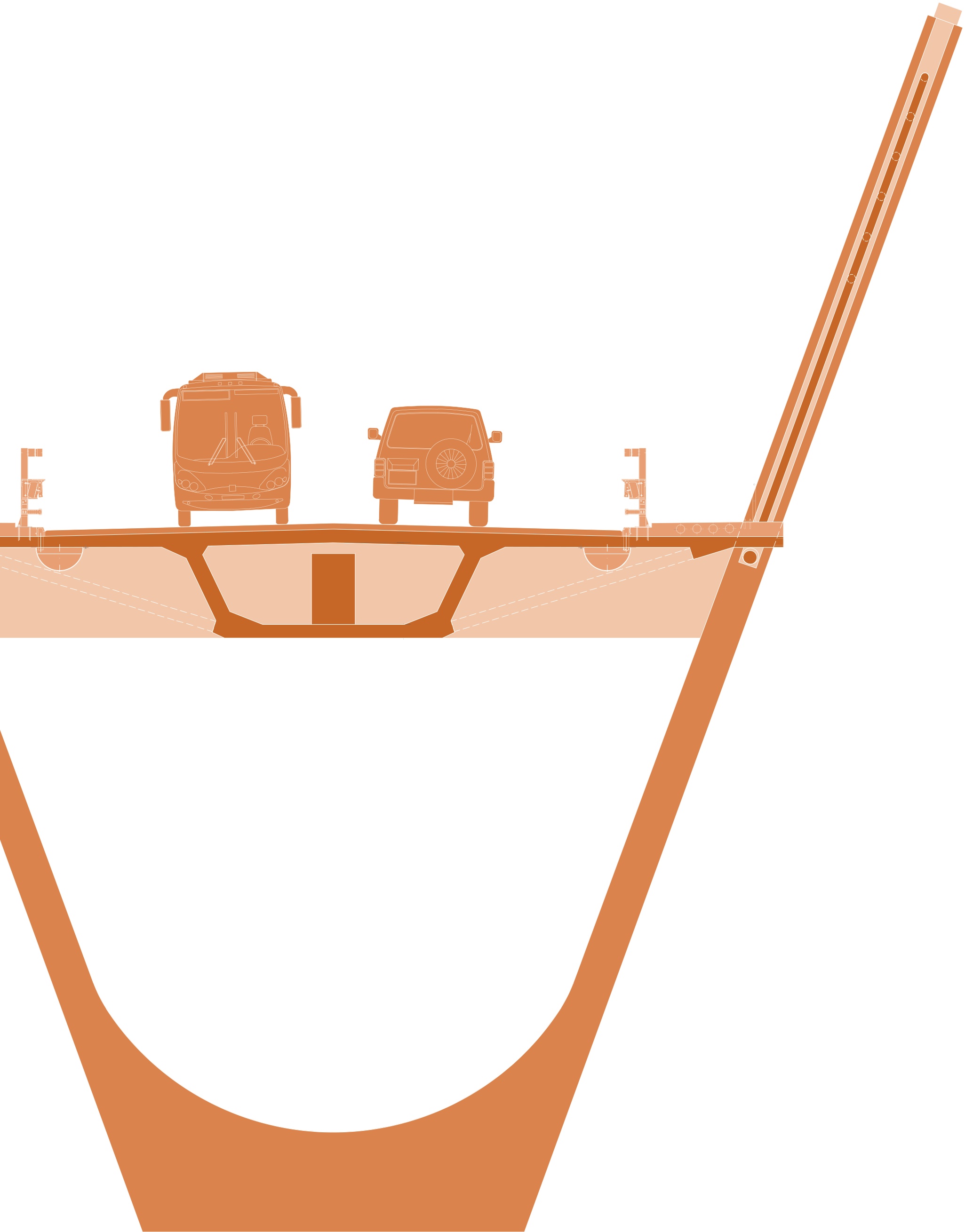
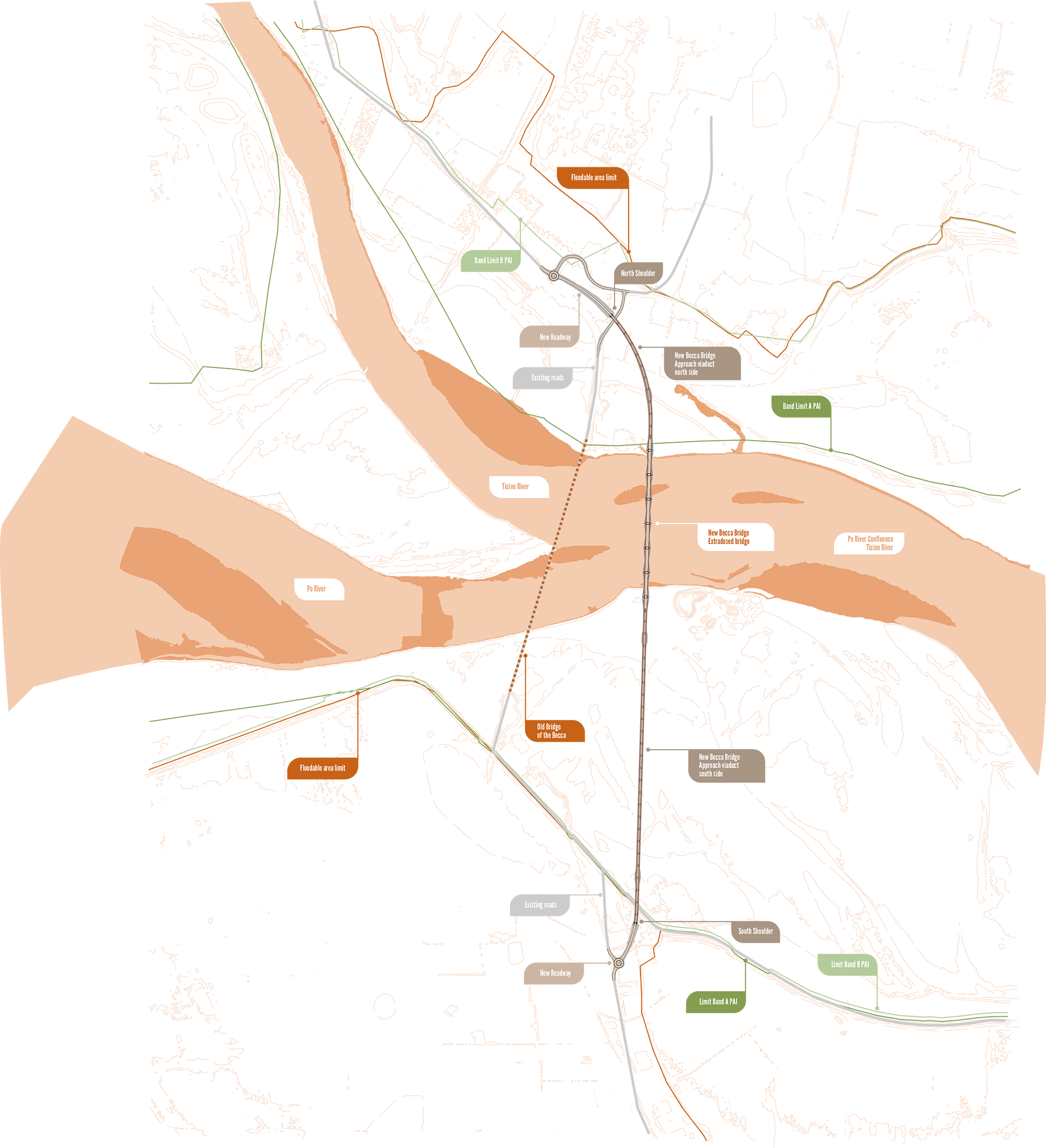
The project was developed to allow all-round vision of both the operation and context of the bridge, perceived not only as interdependent systems but also a single complex system. Therefore, the aims of technical and economic efficiency, hydraulic safety, protection of the environment and collective assets (including the landscape and memory) were examined with the opportunities and restrictions seen through analysis of the subsystems involved (mobility, hydraulic context, natural and human environments, construction techniques etc.). A series of different alternative projects, differing in positioning and architectural-structural solution, arose from this process.
The requirements were reconstructed through a transport study which enabled estimation of traffic demand that the future infrastructure will have to satisfy, taking into account the evolution of the demand and also possible closure to traffic, for obsolescence, of other bridges over the Po in the same area. The estimate of vehicle flows over the bridge was also used to check the design solutions proposed through micro-simulation of the junctions of the new road network with existing ones and simulation of the sound impact of the new infrastructure. The design proposals indicated were submitted to the main institutional stakeholders, with the proposal for conversion of the existing bridge to a different use. Their comments contributed to further extending the overall view of the project.
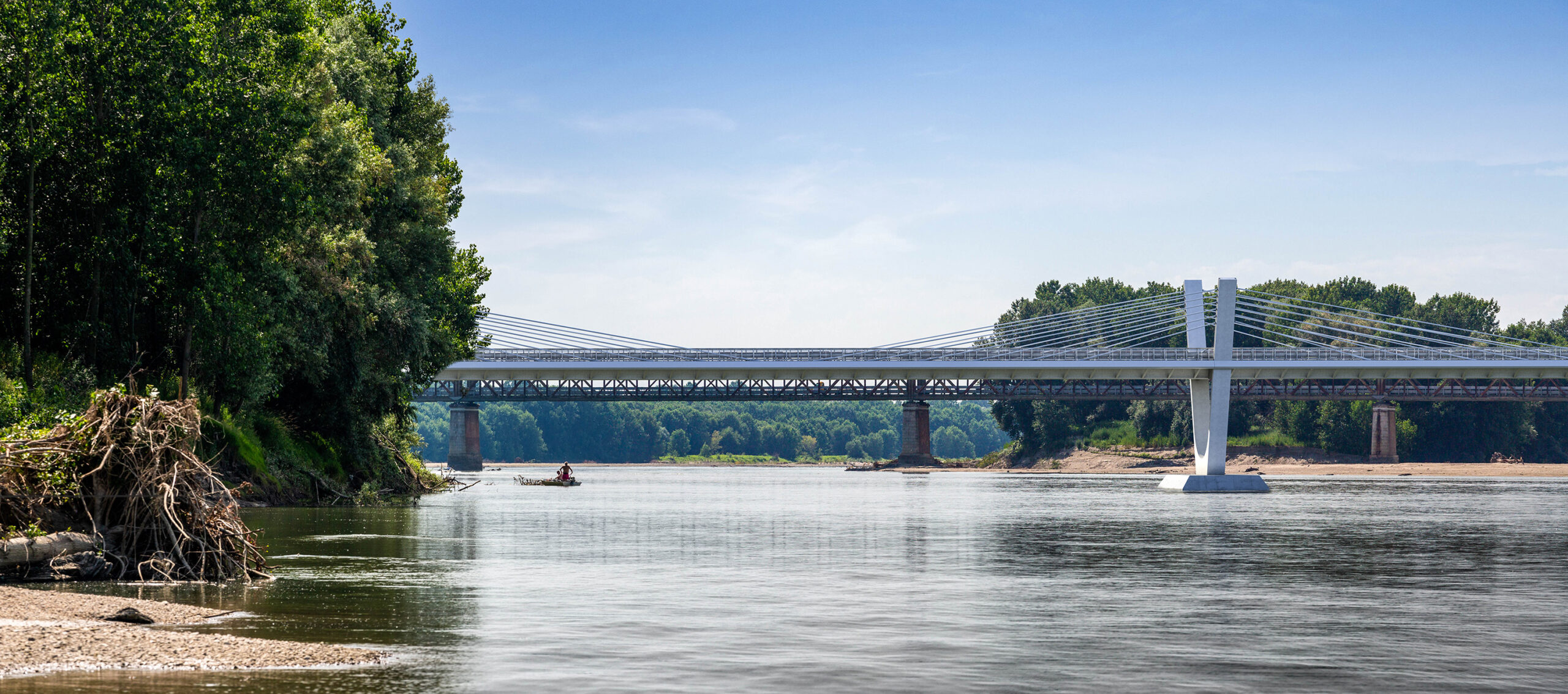
The subsequent comparison of the alternatives was conducted using an approach based on Cost-Benefit Analysis and Multi-Criteria Analysis starting from the Envision™ rating system and Life-Cycle Assessment.
This enabled assessment of the environmental, social and economic sustainability aspects of each design, with reference to the whole life-cycle of the work. The result was a clear and comparable indication of the economic efficiency features and the overall performance of the individual alternatives thus allowing a rapid assessment of the preferable solution for design analysis.
Architecturally and structurally speaking, the new Becca Bridge features a sequence of anchoring aerials which make the shape recognisable. The whole structure consists of an extrados bridge 720 metres long with 6 central spans of 100 metres and 2 side spans of 60 metres, and two approach viaducts of 530 metres (the north viaduct) and 1275 metres (the south viaduct) with central spans of 50 metres and side ones of 40 metres.

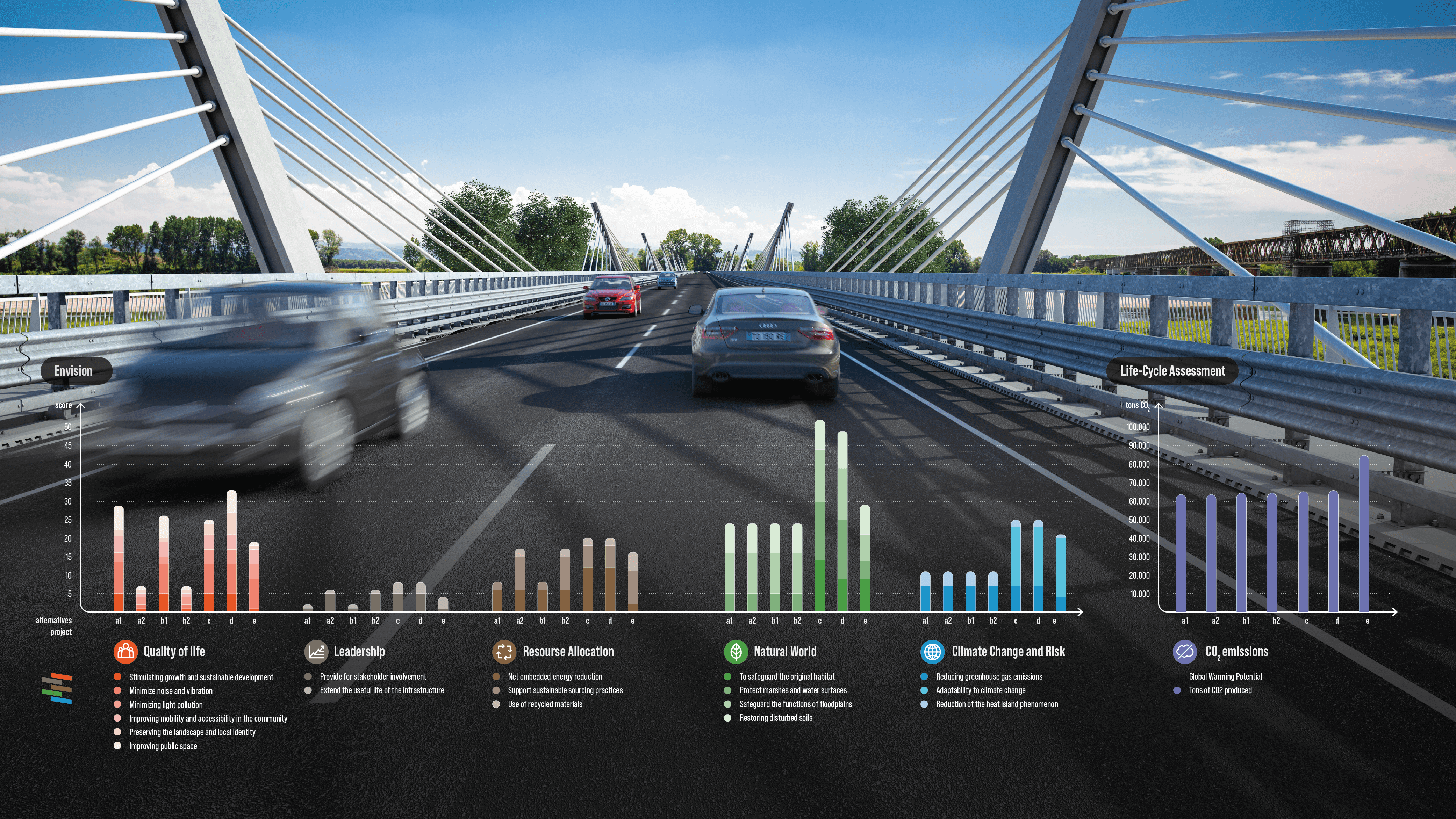
The Bridge over the Brenta
Bridge railway, Padua (Italy) – 2021
The final project to double the railway crossing of the River Brenta was one of the most important operations in the implementation of the Veneto Sistema Ferroviario Metropolitano Regionale (SFMR – Regional Metropolitan Railway System) as it completes the double track configuration of the whole Padua-Castelfranco Veneto line, which is in the Adriatic-Baltic corridor, a leading international freight route.
The aim of the project was to cross the River Brenta near Padua with a single span of 100 metres, so that any interaction with the underlying river flow could be avoided. The already large span would become even bigger considering that the bridge has double track railway in a section of the line that is about 1,900 metres long overall and was intended to redouble the line. Therefore, the structure to cross the River Brenta, with a free opening of 100 metres, is effectively the longest single-span railway bridge in the whole of Italy.
In addition, the infrastructure designed by NET Engineering aimed at eliminating the severe critical factors hydraulically of the existing bridge. To do this, not only did the new, larger, deck have to be built but the existing route also had to be connected to the new one with a low incline so that the performance of the line could be maintained.
In the field of railway bridges in Italy, this bridge is at the upper size limit. The work is a Langer-type tied-arch bridge and was intended to overcome the limitations imposed in the field in Italy to date. The work will clearly be useful in increasing use and offers greater efficiency of the railway infrastructure with obvious environmental advantages but, most of all, greater safety.
There is an interesting river landscape close to the bridge, featuring well-used ‘life paths’, which forms a ‘green belt’ in an urban context. Attention to the shape, and not only the function, was central to harmonising the technological railway sector with the value of the context. The arch was designed to be as low as possible, including sound insulation barriers inside the main structure, following an innovative idea with respect to the standards of Italian Railway Network.
